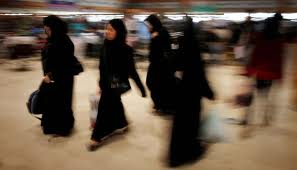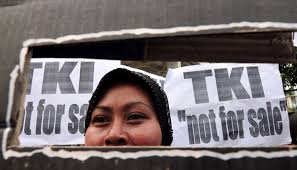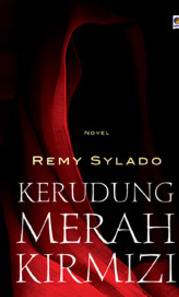Ikhwanul Kiram Mashuri
JAKARTA
SAUDI Arabia certainly attracted because it has Mecca and Madinah. Strictly speaking, there were located The Grand Mosque Masjid al-Haram with its Ka’bahnya and the Prophet’s Mosque, Al-Masjid an-Nabawi with Raudlah and the tomb of the Prophet SAW. Until the 1970s, many Indonesian people go to Mecca and Madinah not only for Hajj and Umrah, also for studying. In a sense, almost all scholars and clerics in Indonesia were a product of the era of Mecca and Medina that time.
They stayed there a few years to study with renowned teachers who teach multiple disciplines in the corners (Zawiyah) of the Grand Mosque and the Prophet’s Mosque. Those who learned the knowledge there were known as ‘Mukimin’. Beside of learning, they also worked to a Sheikh who serve pilgrims and Umrah. Some of the Mukimin later on became famous teacher in Mecca. Say it, among others, Sheikh Nawawi Albantani (Banten), Sheikh Yasin Alpadangi (Padang), and Sheikh Dahlan Alkadiri (Kediri).
 In the mid-1970s, along with the oil boom, Saudi Arabian government began to reform the education system. Traditional teaching and learning in the Grand Mosque and the Prophet’s Mosque transferred to universities with curricula and modern systems. In Medina, for example, there is the Islamic University of Madinah. Meanwhile, in Mecca there is University of Umm Al-Quro. The students who formerly had allowed from different backgrounds, in the modern education system all of the students have to pass the selection tests and received a scholarship from the Saudi Government.
In the mid-1970s, along with the oil boom, Saudi Arabian government began to reform the education system. Traditional teaching and learning in the Grand Mosque and the Prophet’s Mosque transferred to universities with curricula and modern systems. In Medina, for example, there is the Islamic University of Madinah. Meanwhile, in Mecca there is University of Umm Al-Quro. The students who formerly had allowed from different backgrounds, in the modern education system all of the students have to pass the selection tests and received a scholarship from the Saudi Government.
Since then, students who were studying to Mecca and Madinah was shrinking. Only those who were received college scholarships that can be registered at the University of Madinah, Ummul Quro, and other universities in Saudi. However, it did not mean the number of Indonesian Mukimin to be reduced. Oil boom in the 1970s and continues today gave a big jump for the economy of Saudi Arabia. The prosperity of people suddenly increased sharply. They also required a large-scale infrastructure construction. However, local human resources were not yet ready.
 This condition led to open wide employment opportunities for foreigners. Say it; construction workers, drivers, nurses, teachers/lecturers, to domestic helpers and other manual labor. So, crowdie foreign workers from various countries fluxed to Saudi, including from Indonesia. Both were recruited directly by the company/contractor and same come on their own. The latter usually comes to Saudi with Umrah or Hajj visa.
This condition led to open wide employment opportunities for foreigners. Say it; construction workers, drivers, nurses, teachers/lecturers, to domestic helpers and other manual labor. So, crowdie foreign workers from various countries fluxed to Saudi, including from Indonesia. Both were recruited directly by the company/contractor and same come on their own. The latter usually comes to Saudi with Umrah or Hajj visa.
Mukimin label was transformed, from science learners to workers. In the beginning, its only men to go there but now even women eager to go, those who will be worked as domestic workers. The term TKI (Indonesian labor) and TKW (female workers) was started from here.
Until the late 1970s or early 1980s the TKI and TKW number who worked in Saudi Arabia are thousands. Both are with official visa as labor (legal) and illegal. The illegal one is even more numerous. They are not only from Indonesia, but also from other countries. That’s why the Saudi government often then held a massive raid on illegal foreign workers.
Since then, around the 1980s and into the 1990s, Saudi government issued a new policy. Umrah or Hajj will be only through authorized travel agents. It means; no more Hajj or Umrah pilgrims who later worked in the Kingdom illegally. Meanwhile, those who really want to work should be through authorized agents’ employment.
With the new policy, numbers of Indonesian people who want to work in Saudi were not receded, it rather increased. The reason is, yes, it was, they could perform Hajj and Umrah while working a side job. Moreover, employment opportunities in their own country were very difficult. However, to work in Saudi was not always fun. For those who get a good employer would be so lucky. Even, they can go around the world to accompany their employer. But, sometime it could be a bad luck for those who get a bad employer.
 We too often hear the mistreatment suffered by domestic workers in Saudi. Say it; from physical, sexual abuse, unpaid salary and so on. Some of them then run away from their employer. Form a number of friends in Saudi; I sometimes get a pathetic story about bad luck experienced by maids who fled from their employers.
We too often hear the mistreatment suffered by domestic workers in Saudi. Say it; from physical, sexual abuse, unpaid salary and so on. Some of them then run away from their employer. Form a number of friends in Saudi; I sometimes get a pathetic story about bad luck experienced by maids who fled from their employers.
When running away, the maids did not know where to go. They could not bring clothing and other supplies, while their passports were withheld by employer. Sometimes people came to approach (also from Indonesia) them to offer shelter. At the shelter they were given food, clothing, and other daily needs. However, after two or three months later, the host who were apparently part of a mafia network, charged the cost to be reimbursed by the maids for being living in the shelter.
Of course the maids did not have the money for a replacement. They were forced to accept the ‘forced direction’ from the mafia to become a prostitute. According to my friends, most customers were porters or manual labor from Pakistan, Bangladesh, India, and African countries. Meanwhile, money charged for sex services only 50 riyals for five or even 10 people.
 That is why; you should not be surprised if, in the lower classes of foreign workers in Saudi, Indonesian women are called ‘Siti Rahmah Khamsah Riyal’. It means, Indonesia’s women were only paid for five riyals. In fact, Siti Rahmah was earlier an honored label for a lot of women pilgrims with much money while shopping for souvenirs in Hajj or Umrah seasons. Alas, I feel a sharp pain in my heart. I had mixed feelings between sad and angry. It’s harassment for a degrading nation, especially the women. What make me sadder; supposedly the mafia shelter houses also exist in the Holy Land of Mecca and Medina.
That is why; you should not be surprised if, in the lower classes of foreign workers in Saudi, Indonesian women are called ‘Siti Rahmah Khamsah Riyal’. It means, Indonesia’s women were only paid for five riyals. In fact, Siti Rahmah was earlier an honored label for a lot of women pilgrims with much money while shopping for souvenirs in Hajj or Umrah seasons. Alas, I feel a sharp pain in my heart. I had mixed feelings between sad and angry. It’s harassment for a degrading nation, especially the women. What make me sadder; supposedly the mafia shelter houses also exist in the Holy Land of Mecca and Medina.
If the story of mafia shelter house is really existed, definitely it’s a very sad truth. Because of this, the Saudi government raids against illegal foreign workers should be welcome. Until now, the number of illegal TKI and TKW in Saudi were thousands. Due to their illegal status, they are also difficult to obtain legal protection on dealing with things which were not desirable.
Republika
Monday, 18 November 2013,
http://www.republika.co.id/berita/en/resonance/13/11/18/mwfogs-prostitution-in-the-holy-land








